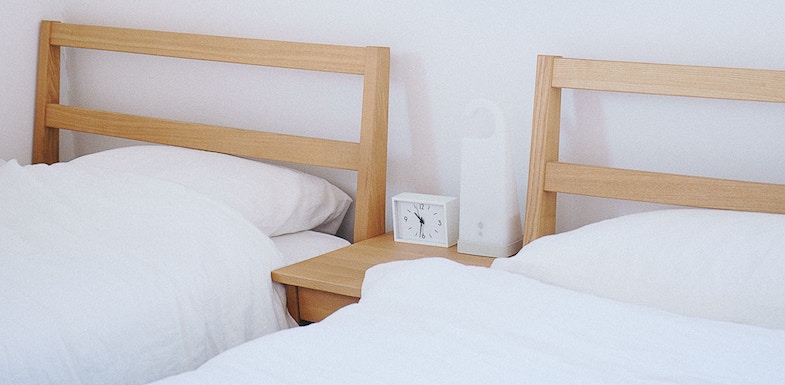If you suffer from one of the three main types of sleep apnea – obstructive, central, or complex – you already know how devastating it can be. Poor sleep impacts everyday life and can lead to severe health issues. After looking at these 20 sleep apnea statistics, 2020 may just be the year you find help for your sleep apnea.
Sleep apnea statistics 2020
While one night of poor sleep may not mean much in the grand scheme of our lives, when poor sleep becomes chronic, it can touch every aspect of our day.
Here are some statistics that begin to show just how important good sleep really is.
General sleep stats
It’s a lovely idea, sinking into a comfortable and warm bed every night, one that cradles you all night long, leaving you refreshed and rested every morning. But how many people actually experience that on a nightly basis?
- Today’s sleepers get less sleep in general: Compared to 1942 when the average amount of shut-eye was just under eight hours, today’s sleepers clock fewer than seven hours a night in bed.
- For 35% of us, that’s not enough sleep: The U.S. Centers for Disease Control and Prevention note that one in three people are not getting enough sleep. This is true for both quantity and quality.
- Teenagers need more sleep, but get less: The average amount of sleep teens get is six and a half hours. An estimated 20% get less than that – just five hours a night.
- Geographically speaking, the upper Midwest sleeps well: The number of people reporting fewer than seven hours of sleep a night peaks in the south and eastern United States. The upper Midwest reports longer sleep times on average.
- Sleepers are divided by race: Black people report short sleep duration (nearly half) more frequently than white and Hispanic people (just around 33% of both groups).
- “Banking” sleep doesn’t always help: But it turns out, it can’t hurt. One study found that longer sleep on weekends helped to make up for the sleep deficit during the week. On the other hand, short sleep on weekends made it exponentially worse.
Sleep apnea statistics 2020 (worldwide)
Given how important sleep is to proper functioning, the following sleep apnea statistics are astonishing.
- Sleep apnea is a commonly underdiagnosed condition: Previous (and common) estimates place global numbers at 100 million. New research finds as many as one billion people may suffer from sleep apnea
- Women may be the most underdiagnosed: One study estimates that as many as 50% of women may suffer from sleep apnea.
- Children have sleep apnea, too: While 4% of children under 18 are diagnosed with sleep apnea, many more are incorrectly diagnosed with ADHD.
- Sleep apnea in children is underdiagnosed: As many as 10-20% of children who snore may have sleep apnea.
- Sleep apnea is not just about sleep: In addition to being the most common sleep disorder, the World Health Organization classifies it as a respiratory disease, too.
- Undiagnosed sleep apnea comes with a price tag: In the U.S., undiagnosed sleep apnea costs approximately $150 billion annually.
Consequences of poor sleep
The poor sleep that comes with sleep apnea doesn’t just result in a little daytime grogginess that can be remedied by coffee. There are serious health consequences for poorly-managed sleep apnea over time. Sleep apnea statistics worldwide bear this out.
- Poor sleep can lead to mental health issues in teens: For every hour less than the recommended nightly seven that teens sleep, serious risks mount. The risk of depression (38%), suicide attempts (58%), and substance abuse increases (23%) with less sleep.
- You can die from sleep apnea: In the U.S., an estimated 38,000 people die from heart disease complicated by poorly-managed sleep apnea.
- Obesity increases the risk of sleep apnea: Obesity increases the risk of sleep apnea by 60%, and the severity of it for every 10% increase in BMI.
- Sleep apnea increases the risk of Alzheimer’s: Dementia is on the rise, and sleep apnea may be a contributing factor.
- Fatal accidents soar in those with sleep apnea: Untreated sleep apnea causes a five-fold risk in the possibility of a fatal accident.
- Sleep apnea is bidirectional with serious health conditions: Whether it’s Type 2 diabetes or AFIB, serious health conditions affect and are affected by sleep apnea.
- Cognitive impairments are worse with comorbid conditions: For people with Type 1 and Type 2 diabetes, sleep apnea does more than make you a little foggy. Cognitive impairments are worse when sleep apnea occurs in addition to these two conditions.
- Your risk of death increases over time: As a chronic condition, sleep apnea is increasingly fatal. For every four or five years you have sleep apnea, your risk of heart attack increases by 30%
Get help for your sleep apnea in Arizona
There is good news behind many of these sleep apnea statistics. You can reduce potential health problems due to sleep apnea when you get sleep apnea treatment.
In Arizona, AZ Dentist can help you get a good night’s rest. We can both help diagnose and provide treatment options for sleep apnea. Our team of sleep apnea dentists can fit patients with a sleep apnea dental device. This is an effective, comfortable, and portable treatment option for this condition. A dental device is adjusted over time to gently reposition your jaw, allowing you to breathe easily all night long.
If you suffer from sleep apnea and need to better understand your treatment options, get in touch today. We can help.
